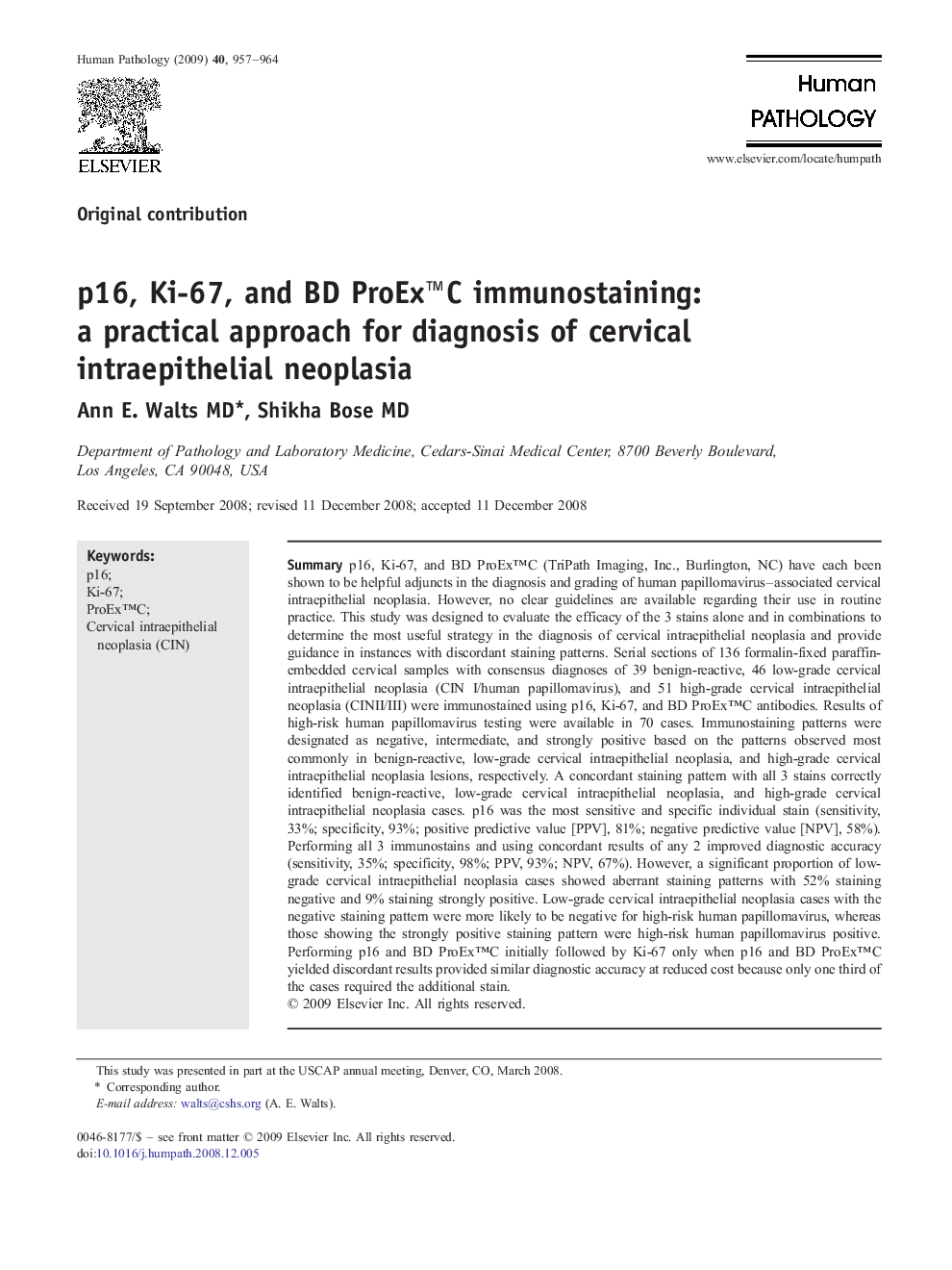| کد مقاله | کد نشریه | سال انتشار | مقاله انگلیسی | نسخه تمام متن |
|---|---|---|---|---|
| 4134490 | 1271461 | 2009 | 8 صفحه PDF | دانلود رایگان |

Summaryp16, Ki-67, and BD ProEx™C (TriPath Imaging, Inc., Burlington, NC) have each been shown to be helpful adjuncts in the diagnosis and grading of human papillomavirus–associated cervical intraepithelial neoplasia. However, no clear guidelines are available regarding their use in routine practice. This study was designed to evaluate the efficacy of the 3 stains alone and in combinations to determine the most useful strategy in the diagnosis of cervical intraepithelial neoplasia and provide guidance in instances with discordant staining patterns. Serial sections of 136 formalin-fixed paraffin-embedded cervical samples with consensus diagnoses of 39 benign-reactive, 46 low-grade cervical intraepithelial neoplasia (CIN I/human papillomavirus), and 51 high-grade cervical intraepithelial neoplasia (CINII/III) were immunostained using p16, Ki-67, and BD ProEx™C antibodies. Results of high-risk human papillomavirus testing were available in 70 cases. Immunostaining patterns were designated as negative, intermediate, and strongly positive based on the patterns observed most commonly in benign-reactive, low-grade cervical intraepithelial neoplasia, and high-grade cervical intraepithelial neoplasia lesions, respectively. A concordant staining pattern with all 3 stains correctly identified benign-reactive, low-grade cervical intraepithelial neoplasia, and high-grade cervical intraepithelial neoplasia cases. p16 was the most sensitive and specific individual stain (sensitivity, 33%; specificity, 93%; positive predictive value [PPV], 81%; negative predictive value [NPV], 58%). Performing all 3 immunostains and using concordant results of any 2 improved diagnostic accuracy (sensitivity, 35%; specificity, 98%; PPV, 93%; NPV, 67%). However, a significant proportion of low-grade cervical intraepithelial neoplasia cases showed aberrant staining patterns with 52% staining negative and 9% staining strongly positive. Low-grade cervical intraepithelial neoplasia cases with the negative staining pattern were more likely to be negative for high-risk human papillomavirus, whereas those showing the strongly positive staining pattern were high-risk human papillomavirus positive. Performing p16 and BD ProEx™C initially followed by Ki-67 only when p16 and BD ProEx™C yielded discordant results provided similar diagnostic accuracy at reduced cost because only one third of the cases required the additional stain.
Journal: Human Pathology - Volume 40, Issue 7, July 2009, Pages 957–964